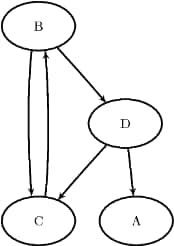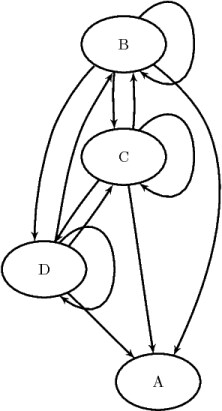The Network Solver
- Overview
- Getting Started
-
Syntax

-
Details
 Input Data for the Network SolverSolving over Subsets of Nodes and Links (Filters)Numeric LimitationsBiconnected Components and Articulation PointsCliqueConnected ComponentsCycleLinear Assignment (Matching)Minimum-Cost Network FlowMinimum CutMinimum Spanning TreeShortest PathTransitive ClosureTraveling Salesman ProblemMacro Variable _OROPTMODEL_
Input Data for the Network SolverSolving over Subsets of Nodes and Links (Filters)Numeric LimitationsBiconnected Components and Articulation PointsCliqueConnected ComponentsCycleLinear Assignment (Matching)Minimum-Cost Network FlowMinimum CutMinimum Spanning TreeShortest PathTransitive ClosureTraveling Salesman ProblemMacro Variable _OROPTMODEL_ -
Examples
 Articulation Points in a Terrorist NetworkCycle Detection for Kidney Donor ExchangeLinear Assignment Problem for Minimizing Swim TimesLinear Assignment Problem, Sparse Format versus Dense FormatMinimum Spanning Tree for Computer Network TopologyTransitive Closure for Identification of Circular Dependencies in a Bug Tracking SystemTraveling Salesman Tour through US Capital Cities
Articulation Points in a Terrorist NetworkCycle Detection for Kidney Donor ExchangeLinear Assignment Problem for Minimizing Swim TimesLinear Assignment Problem, Sparse Format versus Dense FormatMinimum Spanning Tree for Computer Network TopologyTransitive Closure for Identification of Circular Dependencies in a Bug Tracking SystemTraveling Salesman Tour through US Capital Cities - References
Transitive Closure
The transitive closure of a graph G is a graph  such that for all
such that for all  there is a link
there is a link  if and only if there exists a path from i to j in G.
if and only if there exists a path from i to j in G.
The transitive closure of a graph can help you efficiently answer questions about reachability. Suppose you want to answer
the question of whether you can get from node i to node j in the original graph G. Given the transitive closure  of G, you can simply check for the existence of link
of G, you can simply check for the existence of link  to answer the question. Transitive closure has many applications, including speeding up the processing of structured query
languages, which are often used in databases.
to answer the question. Transitive closure has many applications, including speeding up the processing of structured query
languages, which are often used in databases.
In the network solver, you can invoke the transitive closure algorithm by using the TRANSITIVE_CLOSURE option.
The results for the transitive closure algorithm are written to the set that is specified in the CLOSURE= suboption of the OUT= option.
The algorithm that the network solver uses to compute transitive closure is a sparse version of the Floyd-Warshall algorithm
(Cormen, Leiserson, and Rivest 1990). This algorithm runs in time  and therefore might not scale to very large graphs.
and therefore might not scale to very large graphs.
Transitive Closure of a Simple Directed Graph
This example illustrates the use of the transitive closure algorithm on the simple directed graph G that is shown in Figure 9.65.
Figure 9.65: A Simple Directed Graph G

The directed graph G can be represented by the links data set LinkSetIn as follows:
data LinkSetIn; input from $ to $ @@; datalines; B C B D C B D A D C ;
The following statements calculate the transitive closure and output the results in the data set TransClosure:
proc optmodel;
set<str,str> LINKS;
read data LinkSetIn into LINKS=[from to];
set<str,str> CAN_REACH;
solve with NETWORK /
links = ( include = LINKS )
transc
out = ( closure = CAN_REACH )
;
put CAN_REACH;
create data TransClosure from [from to]=CAN_REACH;
quit;
The data set TransClosure contains the transitive closure of G and is shown in Figure 9.66.
Figure 9.66: Transitive Closure of a Simple Directed Graph
The transitive closure of G is shown graphically in Figure 9.67.
Figure 9.67: Transitive Closure of G

For a more detailed example, see Example 9.6.